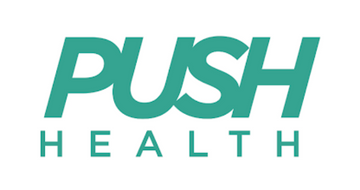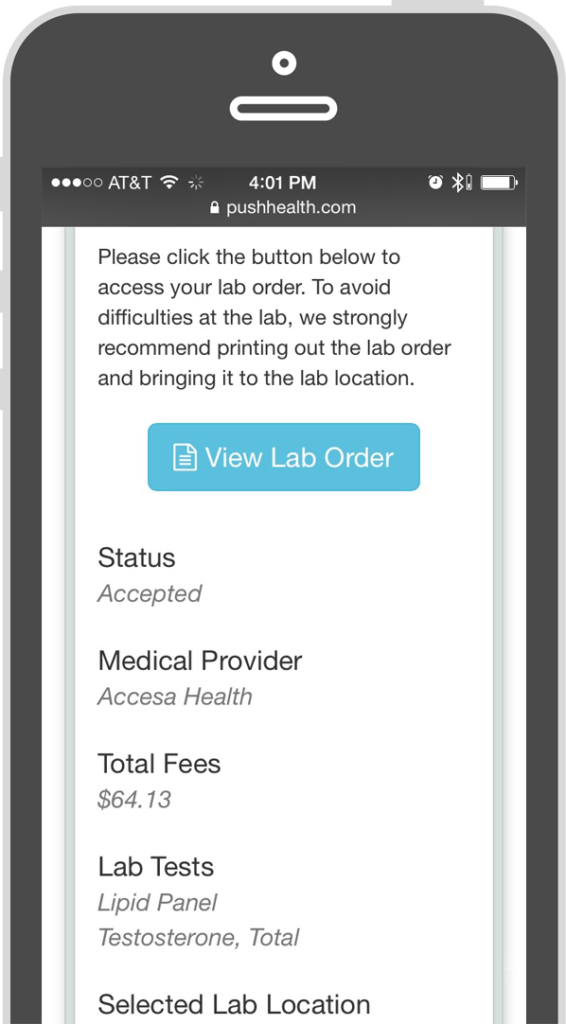 Push Health Overview
Push Health Overview
Push Health is a free healthcare app available for Android and iOS in the United States. Its primary purpose is to connect medical providers and patients in a secure and convenient manner.
The app has been designed through a joint effort between entrepreneurs and medical professionals, who recognized that the disorganization in the traditional healthcare system could be omitted. Since 2013, patients all over the United States can use the app to ensure they get treated quickly and with no hidden charges.
Read the rest of this Push Health review to find all the necessary information about the software.
Featured Partners
 Pros & Cons of Push Health
Pros & Cons of Push Health
Pros
Let’s dive deep into the benefits of using Push Health:
 Easy to download and use
Easy to download and use
Push Health has many advantages; first of all, it’s free to download and easy to use. The user is able to connect from anywhere on their mobile phone or laptop. The process is quick and straightforward – you can use the app without leaving the house. And if you do, you can get notified on the go.
 Helps with medical assistance
Helps with medical assistance
After registration, the patient is able to request medical services, and the providers can offer assistance, message through a secure network without sharing their personal information, send invoices, and approve prescription lab orders which are e-routed to a chosen pharmacy or Quest Diagnostics.
 Provides an extension to offered services
Provides an extension to offered services
The app creates a virtual extension to the medical provider’s practice and enables offering minor services in any venue. Push Health is a medical practice management solution that creates a safe space for doctors, physician assistants, nurse practitioners, and their patients. Medical records are stored within the app and can be accessed anytime.
 Transparent pricing
Transparent pricing
There are no fixed fees when using Push Health. Charge as little or as much as you need for the services you provide. Patients can pay by PayPal or credit card, and with no insurance billing, you’ll be able to get paid quickly and easily.
Cons
What are the cons of using Push Health?
 Not covered by insurance
Not covered by insurance
Unfortunately, health insurance doesn’t cover the costs of medical services. Therefore patients have to pay for any treatment and health assistance by themselves.
 Inability of medication purchase
Inability of medication purchase
Patients can’t buy medications through Push Health; they can only request a prescription from a doctor, which, if granted, enables them to pick up medicine from a chosen pharmacy.
 Prescription can’t be edited
Prescription can’t be edited
Once the patient is given a prescription, it can’t be changed or edited. It is advised to ensure all the necessary information is input correctly beforehand.
 One source of support available
One source of support available
If you need assistance, you can only connect by email. Phone or live support is not available from Push Health.
 One support language
One support language
English is the only support language available on Push Health; no other languages are available.
In a nutshell:
| Push Health Advantages | Push Health Disadvantages |
|---|---|

With Push Health you’ll be able to check your patients’ medical records, offer medical assistance and you won’t even have to leave the house to do so. Download the app and try it for yourself today!
 What is Push Health?
What is Push Health?
Push Health is an app that was created to help medical providers and patients connect through a few simple clicks on digital devices. All that patients need to do is input their email addresses, and they’re ready to request medical care. It’s the perfect medical practice management solution.
Since 2013, the creators of Push Health have been working to make the process as affordable and convenient as possible for anyone using the app. So, if you’re looking for a healthcare software that has not only undergone rigorous review processes, doesn’t store credit card information, and has been on the market for years, then Push Health is the one for you.
 How Does Push Health Work?
How Does Push Health Work?
To recap, Push Health connects licensed doctors and medical providers to patients through the software platform. After patients register on the platform, they can request medical services, message doctors, and request health assistance. Medical providers can send invoices after professionally judging the patient’s situation.
Any user of Push Health can access the app through a mobile phone or computer with internet access – through both Android and iOS systems. There is no download or registration fee, which means that anyone can easily use the app.
The traditional healthcare system has its faults – with Push Health users are able to focus more on treating health conditions, and less on worrying about the procedures and expenses.
At the moment, to use Push Health, patients need to be invited by a medical provider.
 Push Health Features
Push Health Features
 Activity Summary
Activity Summary
You’ll have all the information about your patient in one place, which means that you can keep track of them at all times.
 Straightforward Invitation System
Straightforward Invitation System
Add patients to the system by email invitation or a custom code.
 Secure Communication
Secure Communication
Message in a private and secure manner with your patients and colleagues. Don’t worry about sharing any personal information.
 Individual Payment System
Individual Payment System
You decide how much you want to charge your patients.
 Patient Records Management
Patient Records Management
The patient’s data, such as messages, results, and notes, is stored in charts, which you can easily access.
 HIPAA Compliance
HIPAA Compliance
Push Health follows HIPAA regulatory guidelines for storing patients’ sensitive health data and abides to process security measures.
 E-Prescription
E-Prescription
E-prescribing is an improvement in the quality of healthcare. E-prescribing ensures that the medical provider can send relevant information to the correct pharmacy for the patient to collect medications in an error-free way. In comparison to standard procedures, the process is exemplary and very understandable.
 LegitScript Certification
LegitScript Certification
Certified by an organization that’s trusted by governments and businesses worldwide, Push Health is definitely considered a safe and secure platform.
 Email Support
Email Support
If you need assistance, you can send a message via the Push Health website, and they will reply directly to your inbox. You can also write to them on the following email address: [email protected].
| Why do we need to use Push Health? |
|---|

 Who Should Be Using Push Health?
Who Should Be Using Push Health?
 Patients
Patients
Push Health is made for anyone who wants to access various medical providers conveniently, communicate with them in a hassle-free way, and quickly request medical prescriptions.

 Medical Providers
Medical Providers
The platform is also free for medical providers, such as licensed doctors, physician assistants, and nurse practitioners, who can treat the software as an addition to their practice and easily communicate with patients.
The ability to send invoices, e-prescriptions, and lab tests through a safe and secure platform makes the process between the patient and medical provider very labor-saving.
| What diseases can be treated on Push Health? |
|---|
| Acid Reflux |
| Acne |
| Addiction |
| Anxiety |
| Back Pain |
| Depression |
| Bipolar |
| Celiac Disease |
| Chlamydia |
| Diabetes |
| Ear Pain |
| Eczema |
| Flu |
| Foot Pain |
| Hair Loss |
| Gout |
| Headache |
| Knee Pain |
| Lyme Disease |
| Malaria |
| Measles |
| Neck Pain |
| Panic Attacks |
| Pelvic Pain |
| Pink Eye |
| Runners Knee |
| Scoliosis |
| Sore Throat |
| Stomach Flu |
| Trauma |
| Others |
 How Much Does Push Health Cost?
How Much Does Push Health Cost?
Push Health is free to register for patients. It’s also free to use for licensed doctors, PA’s and NP’s.
Patients will have to pay for services such as prescribing medications, lab tests and invoices. The prices will vary depending on the service provider. Patients can expect to pay anywhere from $0 to a flat fee chosen by the provider.
 Push Health Alternatives
Push Health Alternatives
 Carecloud
Carecloud
Carecloud is a medical practice management solution which automates daily tasks managed by healthcare professionals. Optimize financial and administrative processes with Carecloud, starting at $349 per month.
Similarly to Push Health, Carecloud is a system that enables healthcare professionals to manage documents, provide e-prescriptions and take care of billing and invoicing.
Check out the main features and compare the benefits of both apps:
| Push Health | Carecloud | |
|---|---|---|
| Price | ||
| Feature | ||
 Conclusion
Conclusion
To manage smooth and convenient connections between doctor’s, NP’s, PA’s and patients, download the Push Health app and communicate in a hassle-free way.
The software has been approved by many reliable organizations, making it a safe and secure platform, where patients can request medical prescriptions and treatment. Push Health can be treated as a virtual extension to the medical providers’ practice, where they can perform services such as sending invoices, recording patients’ progress, or ordering lab tests.
Push Health has been on the market for over ten years, making it one of the most reliable apps that are highly beneficial to the patient and medical provider. All you need to use Push Health is a good internet connection and a mobile device. Healthcare services have never been easier to manage!

Frequently Asked Questions (FAQ)
Author
Methodology
- Who?
We are SaaS experts: Our specialists constantly seek the most relevant information to help support your SaaS business. - Why?
We are passionate about users accessing fair SaaS pricing: We offer up-to-date pricing data, reviews, new tools, blogs and research to help you make informed SaaS pricing decisions. - How?
With accurate information: Our website manager tests each software to add a Genius Score using our rating methodology to each product. Our editorial team fact-check every piece of content we publish, and we use first-hand testing, value metrics and leading market data.



